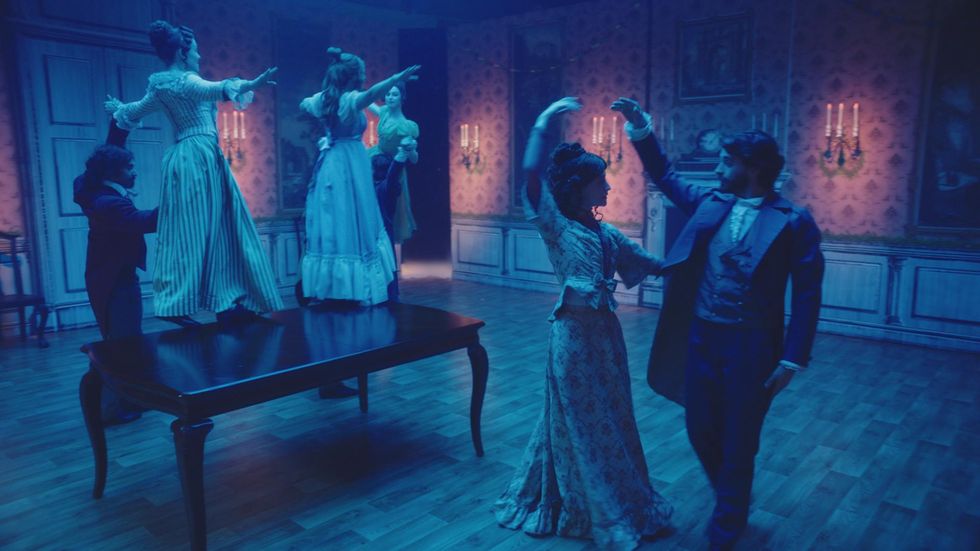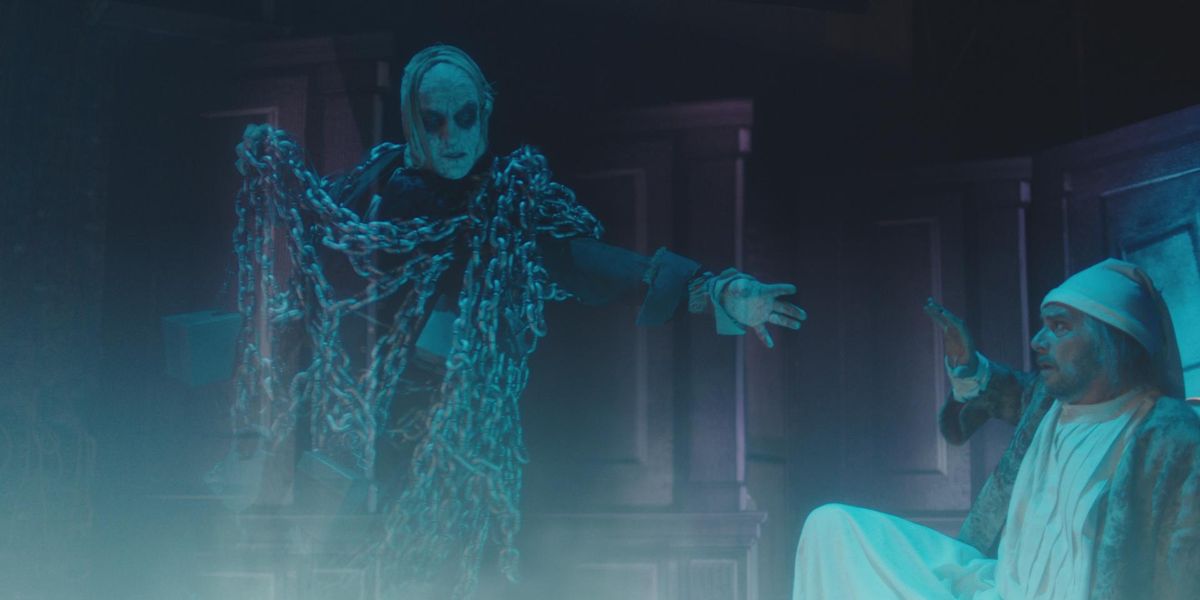This New Feature Film Retells A Christmas Carol With Contemporary Dance
While The Nutcracker may be most balletomanes’ go-to December watch, a new feature-length adaptation of Charles Dickens’ A Christmas Carol, which has come to over 200 cinemas and theaters across the U.S., offers a festive alternative for dance lovers this holiday season.
The brainchild of directors Jacqui and David Morris, the innovative adaptation places dance front and center. Dancers like BalletBoyz founder Michael Nunn, who takes the lead role of Ebenezer Scrooge, tell the tale through movement, their performances overlaid with music and voiceovers by acclaimed actors like Carey Mulligan and Martin Freeman.
While reinterpreting classic narratives has long been the domain of ballet, A Christmas Carol sees contemporary choreographer Russell Maliphant—a Sadler’s Wells associate artist and artistic director of his own eponymous company—tackle the Dickens story, a departure from his usual abstract approach. “I work to consciously avoid a singularity of interpretation in the way that narrative generally requires, instead looking for a plurality of possibilities and meanings,” he says. “I would imagine this gave me a different approach to A Christmas Carol than a choreographer with alternative preoccupations.”
Maliphant started devising movement before the script was even finalized. “Jacqui and David provided me with a number of scenes to choreograph while they were still editing the text,” he explains. “They recorded a read-through of the work-in-progress script so I and the dancers knew what each scene would entail.”
In addition to taking inspiration from Dickens’ original text, Maliphant looked at 19th-century French artist Gustave Doré’s illustrations of London—which make an appearance in the film—to inform his choreography. He also drew on past projects. “Dana Fouras,” who performs the Ghost of Christmas Past, “and I had taken part in a shoot with the photographer Julian Broad some months before A Christmas Carol began,” Maliphant says. “We wrapped her in eight meters of chiffon fabric and played with creating movement while standing close to an electric fan. Ultimately this became an inspiration for her ghost.”
Preexisting ideas also informed the choreography for Marley’s ghost, which Maliphant dances himself. “I had been developing some movement material where I was attached to a bungee cord. I thought it might work for Marley as it creates a different relationship to gravity,” he says.
While Maliphant creates more often for stage than screen, this wasn’t his first film project. Previously, he danced in DV8 Physical Theatre’s film Dead Dreams of Monochrome Men, adapted his work The Rodin Project into a film titled Erebus, and choreographed six scenes for a Rudolf Nureyev documentary, also by Jacqui and David Morris.
“Working with film offers a liberation from the practical realities of the theater,” he says. “As a choreographer for the stage, you know where the audience will be viewing the movement from, and generally the context or atmosphere they will be in: a silent, darkened auditorium. But with film, the work you create is not necessarily going to be seen the way you have made it. The journey of the choreography might be altered dramatically through the editing process.”

Still from A Christmas Carol
A Christmas Carol
was filmed in 2018, long before terms such as “lockdown” and “social distancing” became part of our daily vocabularies. However, its release reflects how in 2020 dance has migrated from stages to (predominantly laptop) screens as live performances have been restricted. “Seeing how vulnerable theaters and the live arts are in such circumstances, I’d say it’s beneficial to explore possibilities for movement work beyond the traditional stage,” says Maliphant.
But it’s not just A Christmas Carol‘s format that makes it so timely: The moral of the story itself feels like a fitting end to an unprecedented year of familial separation, social upheaval and political instability. “A retelling of A Christmas Carol is as relevant today as it must have been when it was originally published in 1843. The central themes of greed versus kindness, the damaging effects of isolation, and the importance of love and compassion are universal,” says Maliphant. “I think we can always benefit from revisiting them.”





